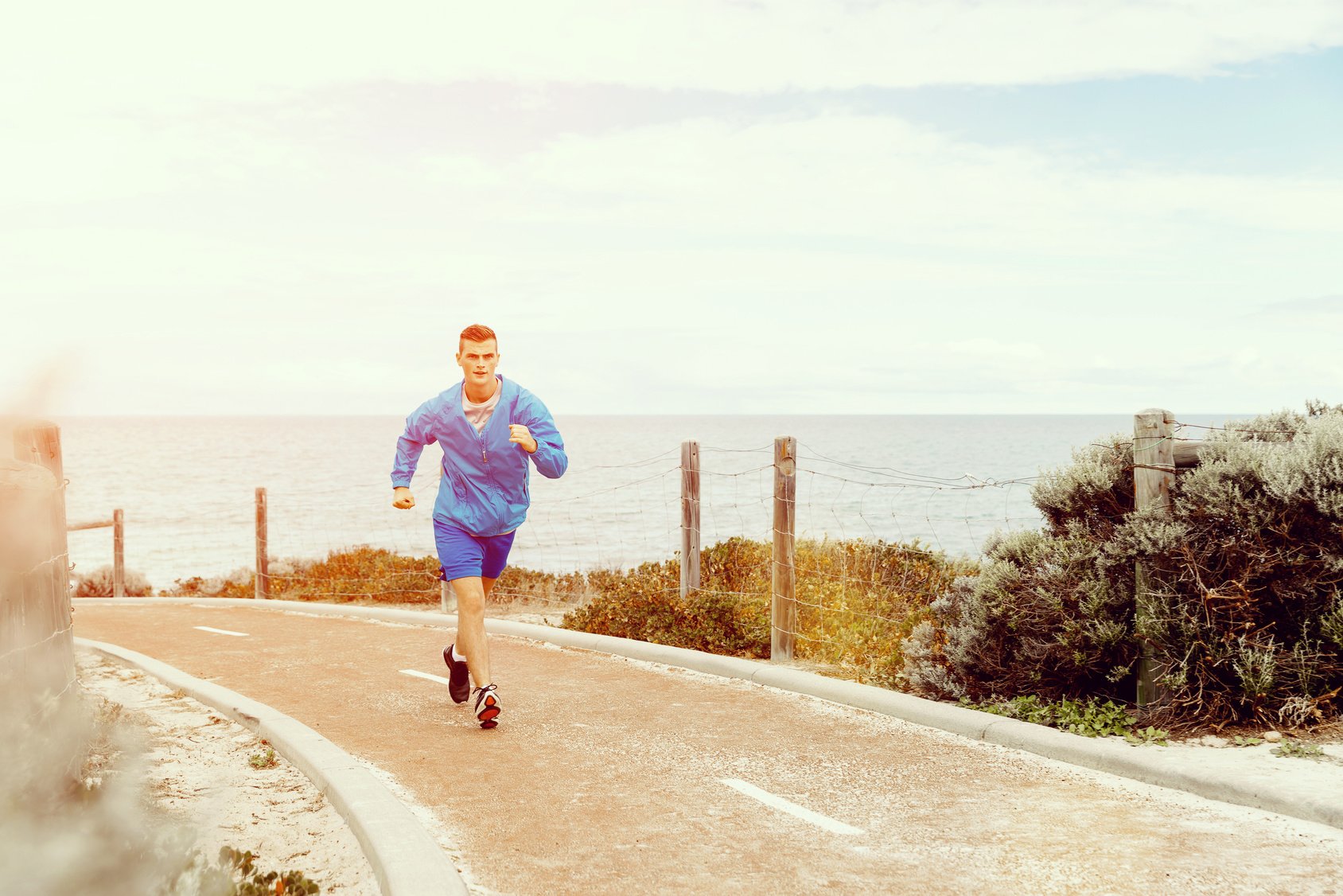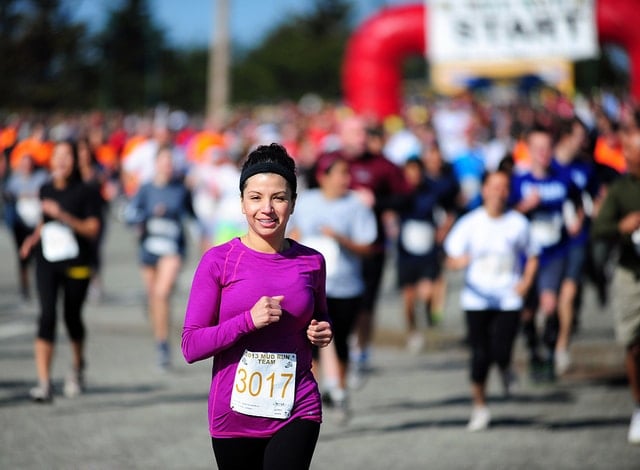Ever finish a run soaked in sweat, lungs on fire, and feel like a champ… only to glance down at your watch or phone and think, “Wait, how far was that?”
If you’ve asked that before, trust me—you’re not alone.
I remember when I first started running.
Back then, I didn’t have a fancy GPS watch or app. I literally mapped out routes using my motorbike and Google Maps.
Not kidding.
I’d ride the route first just to figure out the distance, then go back and run it. That was my system.
These days, I track everything—distance, pace, elevation, you name it.
But here’s the thing: knowing how far you run isn’t just a numbers game. It’s a window into how much you’re growing. It shows you what’s working, what’s not, and where you’re headed.
Let’s break it down.
Why Distance Tracking Is a Game-Changer
Before I share with you the actual tools you need to measure your running distances, let me first tell you why you should care.
1. You Can Actually See Progress
Progress doesn’t always shout.
Sometimes, it shows up in the small stuff—like the fact that 3 miles used to leave you wrecked, and now it’s just your warm-up.
That’s real.
Logging distance, whether in an app or a good old notebook, gives you a way to see how far you’ve come.
Watching your weekly mileage grow over time can give you that extra fire on the days you don’t feel like showing up.
When your legs are tired and your motivation’s low, looking back at those logs reminds you of your work ethic. That’s fuel.
2. Avoid Blowing Up (Or Burning Out)
Ever go from 10 miles one week to 20 the next? Yeah, don’t do that. It’s a shortcut to injury.
I always preach the 10% rule for a reason: adding more than 10% mileage per week increases the chance of overuse injury. I’ve coached runners who ignored this—only to end up with shin splints, Achilles flares, or worse.
Tracking distance helps you ramp up the smart way.
You’ll know when to push, when to pull back, and how to avoid both overtraining and undertraining. It’s your early warning system.
3. You’ll Train Smarter, Not Just Harder
Knowing your sweet spot mileage makes your training more efficient. Maybe your body thrives at 30 km per week. Maybe 50 km breaks you down. You only learn that by watching the numbers.
If you’re aiming to improve endurance, you don’t need to guess.
Stick with a set distance (like 5K) during the week, then slowly stretch one long run to build volume. That’s how runners go from casual joggers to race-ready.
4. Distance Builds Confidence
When you’re training for a race, those numbers matter.
You don’t want to show up to the start line hoping things go well.
You want to know you’re ready.
I’ve coached runners who didn’t believe they could run a half marathon—until we tracked a few 10-mile training runs.
That mental shift is everything. Knowing your logged distances lets you estimate finish times and make adjustments before race day rolls around.
5. Become Your Own Coach
Distance tracking isn’t just about miles—it’s about learning you.
Start noticing patterns: maybe your body runs better with 4-day weeks.
Or you bounce back faster with 35 miles instead of 40. Or you tank every time you go hard three weeks straight.
That’s real data. Learning how your body responds to distance lets you coach yourself better than any online plan ever could.
7 No-Nonsense Ways to Measure How Far You Ran
Whether you’re chasing a new PR or just trying not to get lost on your next long run, knowing your distance matters.
And no—you don’t need fancy gear to get started.
Some runners go full GPS geek, others keep it old-school.
Me? I’ve done both.
So here’s a breakdown of seven solid ways to measure your runs—techy or not. Take what works, ditch the rest.
1. Use a GPS Running Watch (aka your digital training buddy)
If you’re serious about tracking your runs, a GPS watch is the gold standard. I rarely run without mine anymore—it’s become part of the uniform.
How it works:
Think of it like this: there are satellites circling above you 24/7.
Your watch pings off at least three of them to figure out where you are and how far you’ve gone.
Most GPS watches today are accurate within 1–2%—that’s pretty damn good for something that sits on your wrist.
And it’s not just U.S. satellites doing the job anymore. Watches now also tap into Europe’s Galileo and Russia’s GLONASS systems.
So whether you’re running through Bali’s rice paddies or in downtown Tokyo, chances are your watch knows where you are better than you do.
Using it:
It’s plug and play.
Charge it.
Strap it on.
Step outside.
Wait for it to lock in satellites (usually takes 30 seconds).
Then hit “Start” and go. Boom—you’re live. You’ll see distance, pace, time, and maybe even a route map waiting for you at the finish line.
Personally, I love that moment when I stop the run and the screen flashes: “Distance: 10.01 miles.” Not 10. Not 9.9. Ten-point-zero-one. I’m weird like that.
Why it rocks:
You don’t need to pre-plan anything.
Just run wherever your legs take you and the watch logs every step. You also get sweet extras like heart rate, cadence, and training load.
Think of it as a running journal on your wrist. And yeah, the data uploads automatically so you can nerd out over your pace trends later.
The downsides?
GPS isn’t flawless.
Tree cover, tall buildings, or tunnels can mess with the signal. If you’re deep in the woods on a trail run, don’t be shocked if your 10K reads as 9.7.
Also: watches aren’t cheap, though entry-level models are way more affordable these days. Just remember to charge it—I plug mine in while showering post-run. Easy habit.
2. Track Your Run with a Phone App (no extra gear needed)
Don’t own a GPS watch?
That phone in your pocket is more powerful than you think.
Today’s smartphones come with built-in GPS that’s pretty damn accurate—and with the right app, you’ve got a full-fledged run tracker.
How it works:
Just like a GPS watch, your phone taps into those same satellites to track your location and log distance as you move.
Many apps even use motion sensors to smooth out data if the GPS drops temporarily.
Top apps:
Strava, Nike Run Club, Runkeeper, MapMyRun, Adidas Runtastic, Endomondo… I’ve played around with most of these, and honestly, they all get the job done.
The free versions track distance, pace, time, and route. That’s all you really need starting out.
How to use it:
Download the app.
Set up your account.
Before your run, open the app and hit “Start Run.” Tuck your phone into an armband or waist belt.
Most apps will call out your distance and time every mile or km (“1 mile in 9:58…”), which is great if you’re pacing.
When you’re done, tap “Stop,” and boom—you’ve got a post-run summary and a digital map of where you went.
Why it works:
It’s simple, free, and lets you dip your toes into run tracking without spending a dime.
You’ll see your splits, weekly totals, estimated calorie burn, elevation—plenty to work with. And if you’re the competitive type, apps like Strava turn your runs into a leaderboard game.
Chasing that crown on your local segment? Been there.
The tradeoffs:
Phones aren’t perfect.
Carrying one in-hand is awkward and messes with your form. I’ve sweated through enough devices to say: get a belt or band.
Also, phone GPS can drift more than a dedicated watch. I’ve had my app say 5.3 miles when my buddy’s Garmin clocked 5.0. Not a deal-breaker, but something to note (Run to the Finish backs this up).
And yeah—battery life.
Long runs + GPS + music = dead phone. If you’re out for a 3-hour long run, charge your phone fully first or bring a mini power bank.
3. Map Your Route Online (Old-School, Still Gold)
Let’s say you didn’t wear a GPS watch.
Or you just ran for the fun of it and now want to figure out how far you actually went.
That’s where online mapping tools come in—they’re clutch. I used them all the time back in the early days, before GPS watches were even a thing for me.
Back in 2010, I’d finish a run, grab a cold drink, then head straight to the computer and use these map tools to retrace my steps.
That was my way of knowing whether I did 5K or just ran around in circles.
How it works:
Most of these tools use Google Maps or OpenStreetMap.
You click along the route you ran—like playing connect-the-dots with streets and trails—and it tallies up the total distance for you. It’s super useful for post-run tracking and for planning in advance.
Want a 6-mile loop that ends back at your front door? You can build it to the meter.
Top tools:
I’m a fan of On The Go Map, MapMyRun, Plotaroute, Mapometer, and Strava’s Route Builder if you’re already using the app.
They all work basically the same, just with slightly different layouts.
Here’s how I use it (with On The Go Map):
- Open the site, zoom in on your area.
- Click your starting point.
- Keep clicking along your route—each corner, turn, park path.
- It automatically follows roads and calculates your total as you go.
- Switch between miles and kilometers anytime, tweak it if needed, or save it for later.
You can even get the elevation profile, which is a bonus if you want to know where the hills sneak up on you.
Here’s how to plan your running routes.
4. Run on a Measured Track (The OG of Accuracy)
If all else fails—or if you just want dead-simple accuracy—go find a track.
Seriously.
A standard outdoor track gives you a known, controlled loop. You don’t need a watch. You don’t need an app. Just your legs and some counting.
Track basics:
Standard tracks (like the ones at most schools or stadiums) are 400 meters per lap on the inside lane. That’s about a quarter mile.
So four laps = roughly 1 mile (technically 1600 meters = 0.994 miles, but close enough unless you’re racing Kipchoge).
Some tracks—usually indoor or older ones—might be shorter, like 300 meters, but they’re usually labeled. Assuming you’re on a 400m track, just count your laps:
- 4 laps = ~1 mile
- 8 laps = ~2 miles
- 12 laps = you’re officially hooked
How to use it:
Show up.
Start running.
Count your laps. That’s it.
You’ll always know your exact distance. I’ve had plenty of athletes build their fitness one lap at a time.
Even mentally, it helps—every lap feels like a mini-win. And it’s ideal for speed sessions too: things like 8x400m repeats, mile time trials, or consistent pacing drills.
Back in college, I did some ridiculous volume on the track—20+ laps for steady-state workouts.
Yeah, it got a bit monotonous, but the feedback was instant. I could gauge pace just by how I hit the turns.
Pros:
Accuracy is bulletproof.
No GPS drift.
No “was that 5.8 or 6 miles?” debates.
No batteries.
No signal issues.
Just pure, repeatable measurement. It’s the best place to test yourself when you want to lock in pacing. It’s also safer—no cars, no street crossings, no traffic madness.
Cons:
Okay, let’s be real: running in circles can get boring fast.
Not everyone vibes with it. Some people hate the monotony.
And depending on your town, tracks might be locked up or have weird access rules. Also, the midday sun on a wide-open rubber surface? Brutal.
And if the high school track team shows up, you’re now in a game of human Frogger.
Standard etiquette: faster runners stick to lane 1, slower runners and walkers move to the outside. Respect the lane flow.
5. Treadmill Tracking (Your Rainy-Day Backup Plan)
Let’s face it—sometimes the weather sucks, traffic’s a nightmare, or it’s pitch dark out and you just don’t feel like dodging scooters or potholes.
That’s when the treadmill steps in as your no-excuses fallback.
And hey, one thing treadmills do really well? They tell you exactly how far you’re running—right there on the screen.
No satellites. No guessing. Just pure belt math.
How it works:
A treadmill is basically a motorized conveyor belt.
It knows how long that belt is and counts how many times it rotates. So when it shows you 1.00 mile, that’s not some random number—it’s a mechanical calculation.
If the belt spins the equivalent of a mile, it logs it. As long as the machine’s calibrated right (which most modern treadmills are), it’s as accurate as a track—sometimes even more so (Runner’s Handbook backs this up).
No signal loss. No GPS bounce. Just math.
How to use it:
Hop on. Start running. That’s it.
The display starts at 0.00 and ticks up as you go.
You can switch between miles and kilometers depending on what your training calls for. Set your speed—say, 6.0 mph—and the treadmill knows you’re running a 10-minute mile pace. So after 30 minutes? You’ve logged 3 miles.
It feels pretty amazing to knock out a clean 5.00 miles right on the dot. Super satisfying.
What to watch out for:
If you’re holding onto the handrails and just kinda gliding while the belt moves, guess what? The treadmill still logs it as distance. But your legs didn’t do the work.
So yeah—don’t cheat. Let your body earn every tenth of a mile.
Also, if your treadmill is ancient or poorly maintained, it might be a little off. But most newer machines are spot-on.
If anything seems fishy, ask the gym staff when it was last calibrated—or just assume there’s a slight fudge factor, maybe 3–5%.
Heads-up for GPS users:
Your watch won’t track treadmill runs properly unless it has an indoor mode or foot pod.
Why?
Because you’re not actually moving through space, so GPS gets confused. Watches rely on wrist movement or cadence sensors inside.
If it shows 4.2 miles but the treadmill says 5.0? Trust the treadmill. Or better yet, turn off GPS and manually input the distance later.
Why it works:
- It’s weatherproof.
- It’s consistent.
- You control pace, incline, effort.
- It’s low-impact (great if you’re dealing with sore joints or recovering from injury).
- And you always know how far you went.
Downsides?
Let’s be real—running in place can feel like mental punishment.
There’s a reason people call it the “dreadmill.” It’s also boring if you don’t have music, a podcast, or something to watch. And unless you own one, you’re probably paying for gym access.
Also, the effort doesn’t quite match outdoor running. There’s no wind. No turns. No terrain changes. Five treadmill miles can feel easier on your body—but tougher on your brain.
6. Measure Your Route With a Car or Bike
Before watches, before apps, before Strava segments—there was the car odometer.
Yep, that’s how a lot of runners (including me) used to track routes. If you’ve got a car or a bike with a speedometer, this method still works like a charm.
Car Odometer Method:
Here’s how I did it back when I was prepping for my first 10K:
- Jump in the car.
- Reset the trip odometer to 0.0.
- Drive the exact route you plan to run—or already ran.
- Check the trip meter at the finish.
If it reads 6.25?
That’s your distance. Done.
I once looped my neighborhood with hazard lights blinking just to get an exact 6.2-mile course mapped for race prep. Probably annoyed a few neighbors, but hey—it worked.
Bike Computer Method:
Same idea, different wheels.
If you ride, just cycle the route with your bike computer on. It’ll track distance just like GPS would.
This works great for trails where cars can’t go—or if you’re avoiding using gas just to map a loop.
If you’re more of a DIY type, some folks even stick an old-school wheel sensor on a backup bike just for route measuring.
Measuring Wheel (Hardcore Version):
This is what race directors use.
You’ve probably seen one: a little wheel that clicks every time it rolls a meter or yard.
It’s what they use to certify official marathon distances. (yes, even in 2025, the gold standard for race course measurement is still a rolling wheel.)
You probably won’t do this unless you’re building a homegrown trail race, but it’s cool to know.
Why it works:
- It’s simple.
- No tech needed during the run.
- Great for planning a new loop or verifying a course.
- Feels a bit like you’re building your own race route, which is kind of fun.
Limitations:
- It’s not super precise for trail or pedestrian-only sections (cars can’t go there).
- If your path has lots of small curves or turns, odometers might miss those tight details.
- You need time. And a vehicle. And maybe a little gas money.
Honestly, I haven’t used this method in years, but I keep it in my back pocket.
7. Foot Pods & Pedometers (The Backup Squad)
Alright, let’s wrap this up with a couple of less-common tools you might come across—wearable foot pods and pedometers.
They’re not as popular today, but they still have a place in the runner’s toolbox, especially when GPS isn’t an option.
Foot Pods:
These are tiny sensors you clip onto your shoe.
They track your movement using internal accelerometers—basically measuring how your foot swings, then estimating pace and distance.
Sounds like magic, but it’s actually pretty legit.
High-end foot pods like the Stryd are super accurate once you calibrate them. That means running a known distance to “teach” it your stride length.
After that, it can measure your runs really well—especially indoors or in areas where GPS acts up (like deep city streets or under thick tree cover).
I’ve recommended foot pods to a few runners training on indoor tracks or doing a lot of treadmill work. Once dialed in, they’re scary accurate—even on runs where GPS fails.
Pedometers:
Basic pedometers count your steps. Multiply steps by your average stride length, and voilà—you get an estimated distance.
But here’s the problem: stride length isn’t always consistent. You take shorter steps when tired, longer strides when sprinting, and terrain can mess with everything (Runner’s World has pointed this out before).
Newer devices (like fitness trackers and smartwatches without GPS) use accelerometers and fancy algorithms to smooth things out.
It’s better, but still not laser-sharp. If you care about precision, they’re more of a ballpark tool.
When it makes sense:
- No GPS access (indoor races, no-watch environments)
- You’re running on a treadmill with no screen
- You’re just curious and want something fun to track with
Foot pods shine in those weird edge cases. Pedometers are a fun throwback or good for step-count goals.
But for day-to-day running? You’re better off with GPS or treadmill readouts.
So… What’s the Best Way to Track Your Runs?
You’ve now got a full arsenal.
From satellites and sensors to car dashboards and track laps—you’ve got options. But here’s the truth:
The best method is the one that fits your lifestyle.
It’s not about having the fanciest gear. It’s about using what you’ve got and staying consistent.
Here’s my quick rundown:
- Love data and live in spreadsheets? GPS watch or Strava will be your best friend.
- On a tight budget? Phone app + a running belt = all you need.
- Prefer planning things out? Online map tools are perfect for route control freaks (I say that with love).
- Like to keep it loose and free? Run by feel, check distance now and then, and call it good.
Just don’t let the tools get in the way of why you started running in the first place.
Final Thoughts: Run First, Measure Second
At the end of the day, numbers are nice—but they’re not the whole story.
You showed up.
You laced up.
You moved.
That matters more than any screen readout or app stat.
So next time you ask, “How far did I run?”—remember this guide, pick your method, and measure it your way.
Whether it’s 2 miles or 22, you did something powerful for your body, your brain, and your future.
Be proud of that.
Now get out there.
Run. Track it—or don’t. Just make it count.
— David








